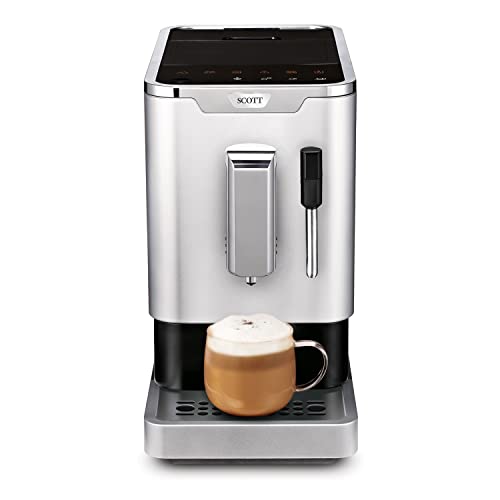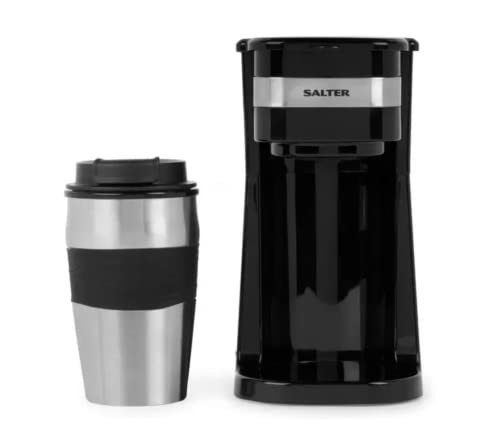A Complete Guide To Machine Coffee
페이지 정보
작성자 Shelby Bergman 작성일24-12-15 21:29 조회16회 댓글0건관련링크
본문
 What Goes On Inside a Machine Coffee Maker?
What Goes On Inside a Machine Coffee Maker?Coffee machines allow you to enjoy a cup of coffee at home coffee machines. Many of the most well-known models come with a programmable clock and even a built-in grinder.
 When you switch on the power the thermostat controls the heating element, which is circling a warming plate. It also has a water tube constructed of aluminum that flows through it.
When you switch on the power the thermostat controls the heating element, which is circling a warming plate. It also has a water tube constructed of aluminum that flows through it.Cold-Water Tube
A machine coffeemaker is a device that takes the water you pour into it and transforms it into coffee. It does this by boiling the water, then passing it through a process that creates high pressure to push it through a capsule made of ground or soluble material. These machines utilize up to 15 bars of pressure compared to coffee percolators that operate at just one bar.
There is a reservoir on the bottom of your machine. It looks like a bucket and holds the water that is used to make your beverage. This reservoir has a hole at the bottom. It connects one end to the tube within the heating element and on the other hand, to an insulated white tube that runs from the bottom of the machine up to the faucet.
When you switch on the machine the water from the reservoir is transferred to the heating chamber. The thermostat then instructs the machine to get heated. As the water warms up, it expands and pushes on a screen beneath a portafilter that has been filled with coffee and reduced. The pressure causes the screen to pierce the filter, allowing the espresso to get into the cup.
The espresso that comes out of your machine is a delicious, rich brew that can have different levels of acidity based on the type of beans you choose. If you notice that your brew has a sour taste try changing to an alternative filter paper or a more coarsely ground coffee. If the issue persists, you should contact an authorized technician to perform a de-liming process. The problem is usually caused by lime scale.
Hot-Water Tube
The white tube that is insulated at the base of your coffee maker is referred to as the hot-water tub. It carries hot water from the heating chamber to the faucet on the top of your coffee maker. This water saturates your grounds, bringing their flavors into the coffee pot you are waiting for.
Certain coffee makers come with a feature that keeps the water warm so that it's ready for you as soon as you wake up. This is accomplished by using a heater to generate a small amount of steam. The steam is then directed to the spout to keep your coffee warm until you are ready to pour it.
While it might appear that a coffee maker is complex and expensive however, the majority of models are easy to use and have little moving parts. A good cleaning and regular use will keep your machine in top condition for a long time to come.
Many coffee makers with a built-in grinder allow the addition of ground Coffee Machines Commercial from a container, secure the portafilter into place and then activate the switch inside to begin the brewing process. The pump will pressurize heated water until it reaches 220 psi pressure when the switch is flipped.
One of the biggest issues when making the perfect cup of coffee is having to refill the reservoir frequently. Some manufacturers have created coffee makers that connect directly to a household water line, allowing you to bypass the reservoir entirely. There are kits available for those looking to make it their own. They can change any machine into one that connects directly to a household water line. This procedure is more complicated and requires drilling holes into your machine to accommodate an adapter. This could weaken the structure of your coffee maker and cause cracking around the drilled areas. It is recommended to purchase a specially-built coffee maker that is specifically designed to accept a direct water line for best results.
Resistive Heat Element
The heater is made of metal and has a special resistance to electricity. It blocks the flow of current but without stopping it completely. In addition, some energy is transformed into heat. This is what warms the water inside the boiler of your coffee machines for home maker.
The heating element is located on the left side of the machine's base. It looks like the filament of a lightbulb or the element of an electric toaster. It is composed of an aluminum extrusion that is divided into two sections with a tube that is used to allow water to flow, and a resistive element. (Watch the video here). The coiled wire is heated due to the resistance it has.
When you switch on your coffee maker, the device heats the aluminum water tube to where it boils. Then the bubbles rise up through the white tube and are sprayed on your coffee grounds by the shower head. The water that is sprayed picks up the essential oil of the ground coffee beans as it goes down, and also contains caffeine.
If your coffee machine automatic maker is not release hot water, it's most likely that the heating element or pressure switch thermostat is not working properly. Both are able to be tested using a multi meter conducting a continuity test. You connect one pole to the electrical connection, and the other to the body of the flange and it should read a number below 1. If there is no reading then the thermostat or switch needs to be replaced.
The other main part of your coffee maker that could be the source of problems is the water pump, or reservoir. It could get blocked with lime and that is why you must run the mixture of water and a descaling solution through it.
Warming Plate
A warming plate is an heated metal surface which keeps the coffee warm after it has been brewed. This coffee maker feature is extremely popular with those who enjoy coffee at restaurants and is also a useful addition to any home kitchen. However the warming plate could be rusty and ruin the flavor of the coffee, making it essential to clean it regularly. The best method of cleaning a coffee maker heating plate is to use a mix of water and oxalic acid.
Oxalic acid is used as a powerful cleaner to remove the rust that has built up on sinks, pipes and gas stove burners. It can be used to clean various other household items. It is a highly effective solution for cleaning the warming plate that is rusty in your coffee maker. It is available at most hardware stores. This product can cause serious burns and injuries in the event that it is not handled properly.
If you are planning to clean a coffee maker with rust heating plate, first ensure that the coffee maker is disconnected. This will prevent damage from the heat generated by the cleaning products. Also, you should wear rubber gloves as the oxalic acids can be very harsh on your skin.
Next then, sprinkle some white vinegar over the rusty area of the heating plate. This will react chemically and dissolve the rust. Then clean the area using an abrasive or rag until it is clean. If your coffee maker is very rusted, you may need to repeat the process several times to make sure it is completely clean. Make sure that the oxalic acid is completely evaporated prior to plugging your coffee maker back in and start using it again.
Aluminum Water Tube
When you turn on your machine, it will start making the coffee machines home for you. It appears to be something that is easy enough, but there is a lot going on in there to turn the scoops of ground and some water into a steaming hot drink.
First, the cold water flows through a hole in the bottom of your reservoir and into the aluminum tube that is beneath the resistive heating element. The aluminum water tube heats up and, when it reaches a boiling point, bubbles form which push water up the white tube in the center of the coffee maker.
The hot water squirts from the top of this tube and into a perforated plastic disc called the shower head (or basket in certain machines). Here, the hot water is sprayed onto the coffee grounds, absorbing the oil essence.
The water then flows over the coffee and then through the filter, it flows back into your pot. The pump's oscillating pressure is the reason for this. The shearing force induced by the bubble's expanding and contracting boundaries separates the coffee ground particles from the water, leaving behind an espresso-like, strong beverage.
Remember that your machine is dependent on a variety of different components. They are all interconnected. If you experience strange noises or feel vibrations it could be due to a loose part. Loose components can create noise and weaken connections. This will result in more problems.
댓글목록
등록된 댓글이 없습니다.
